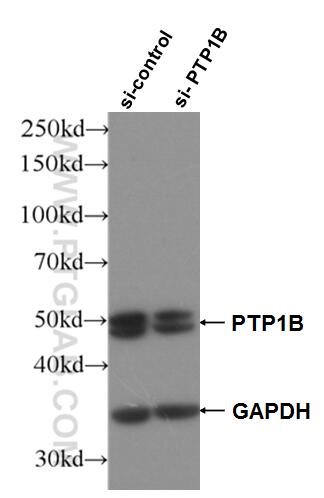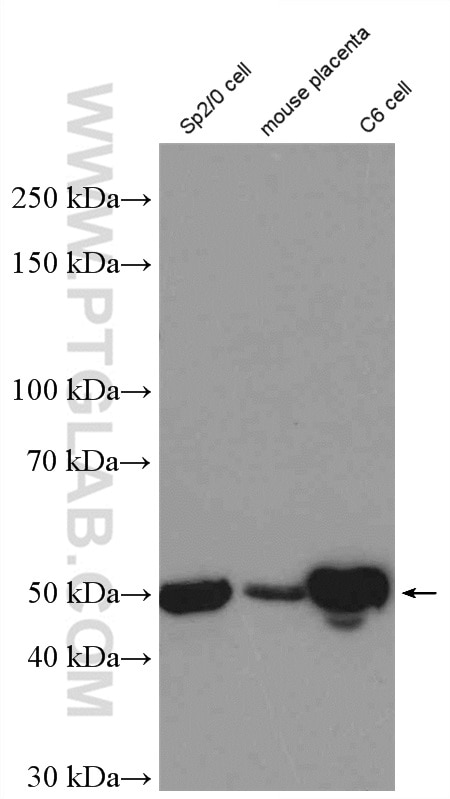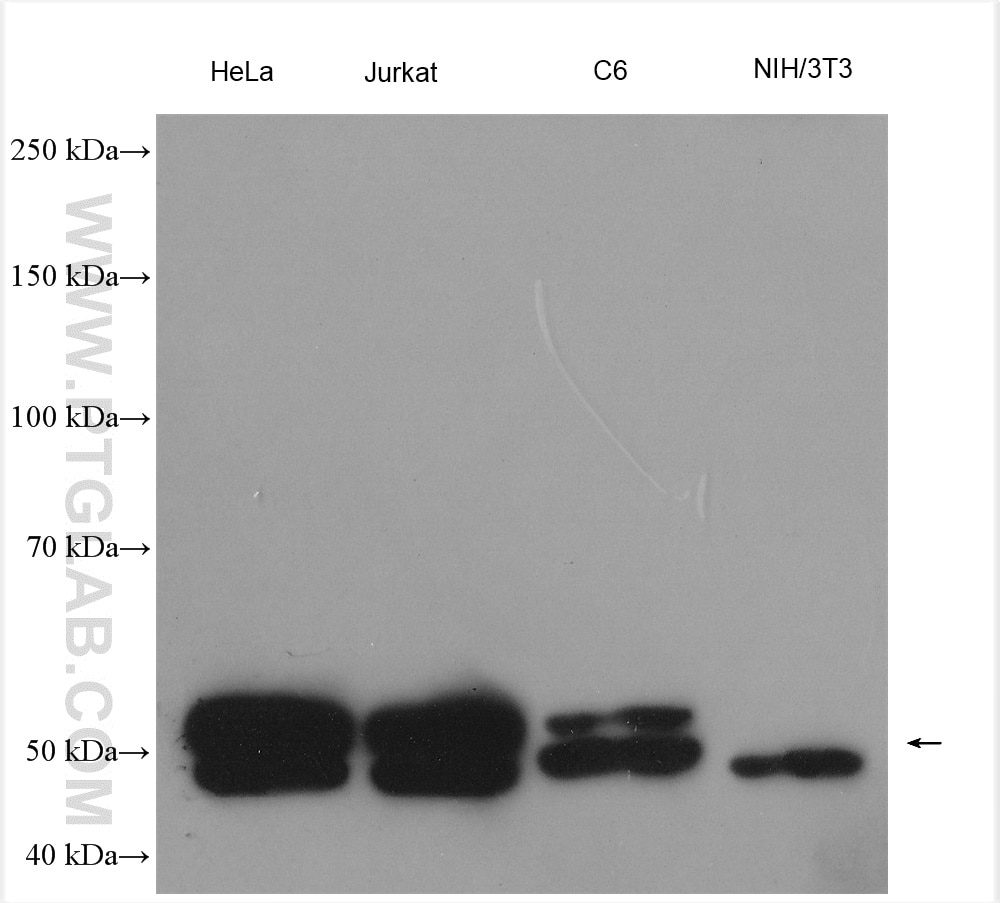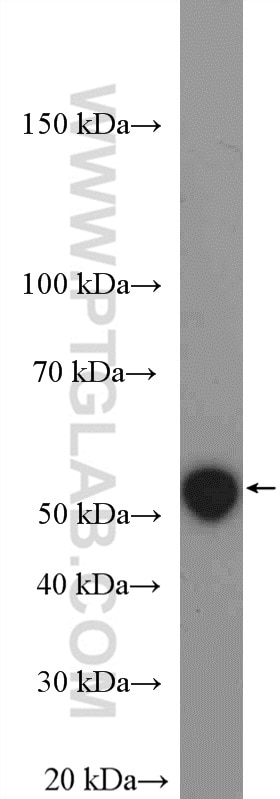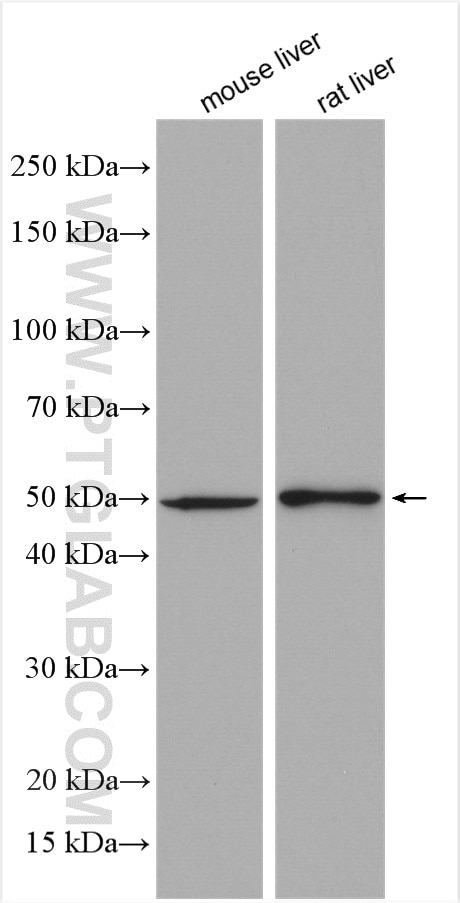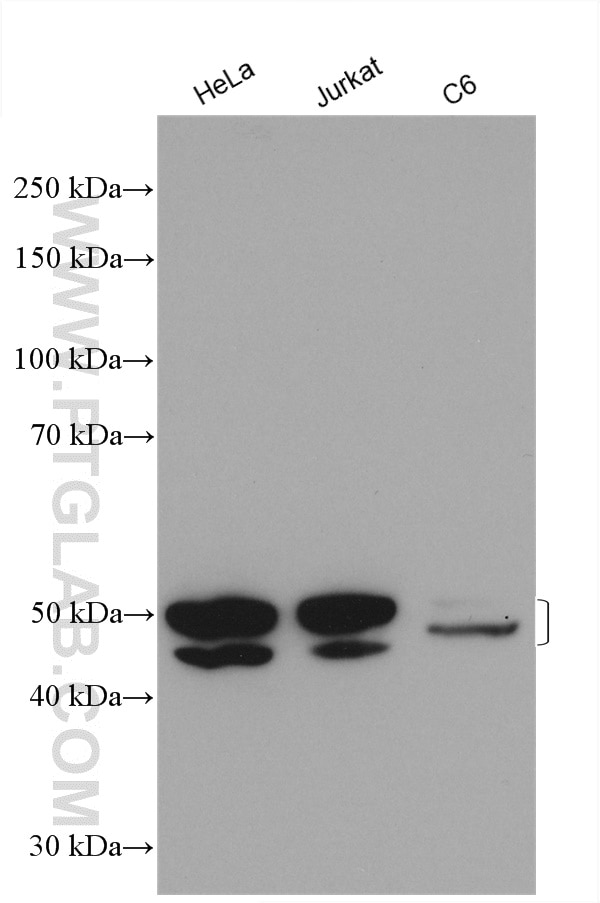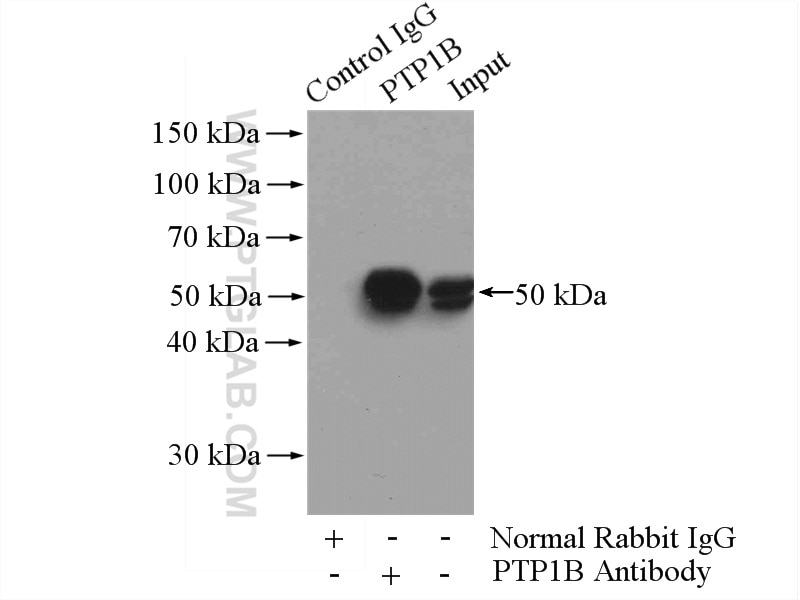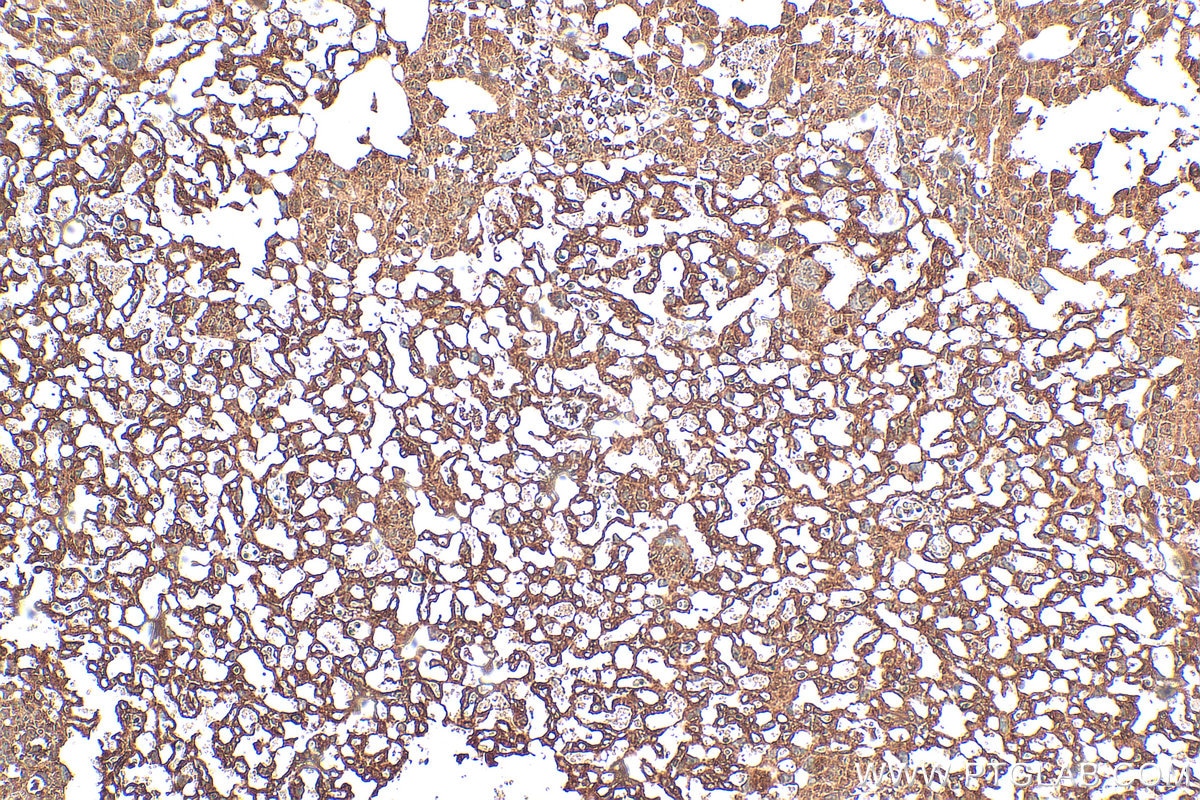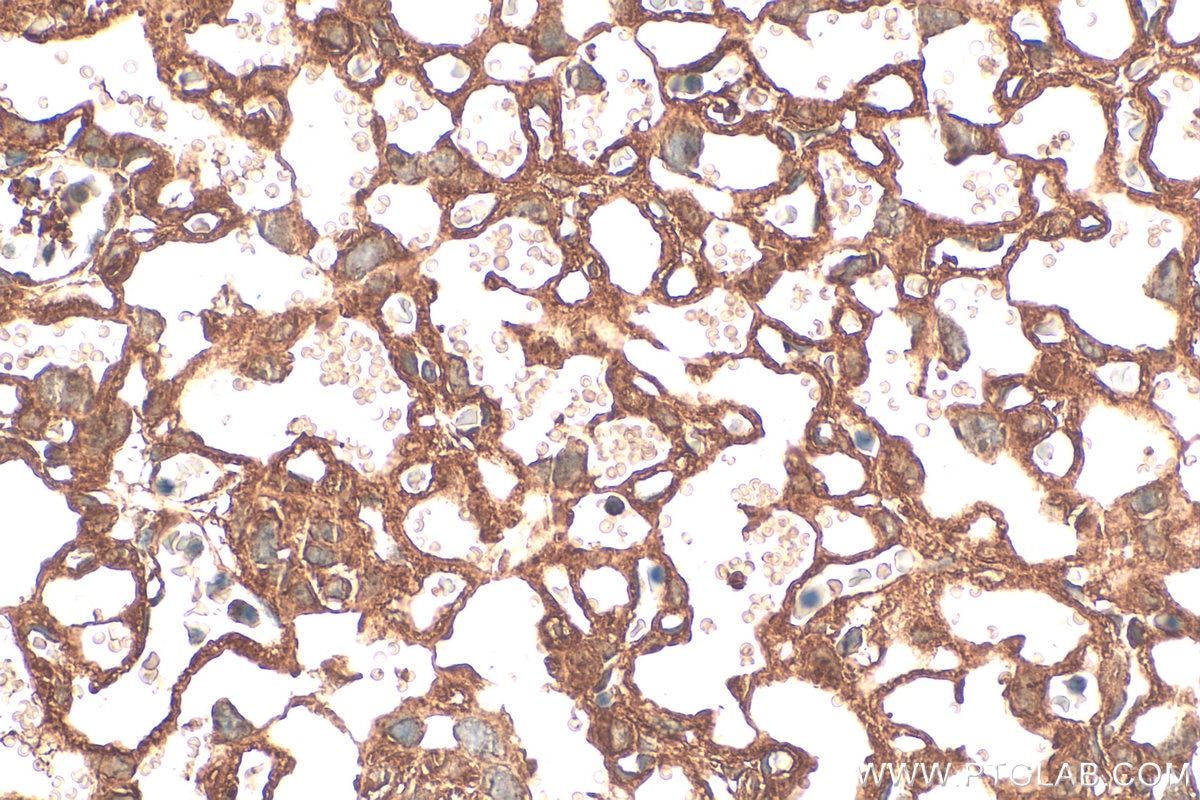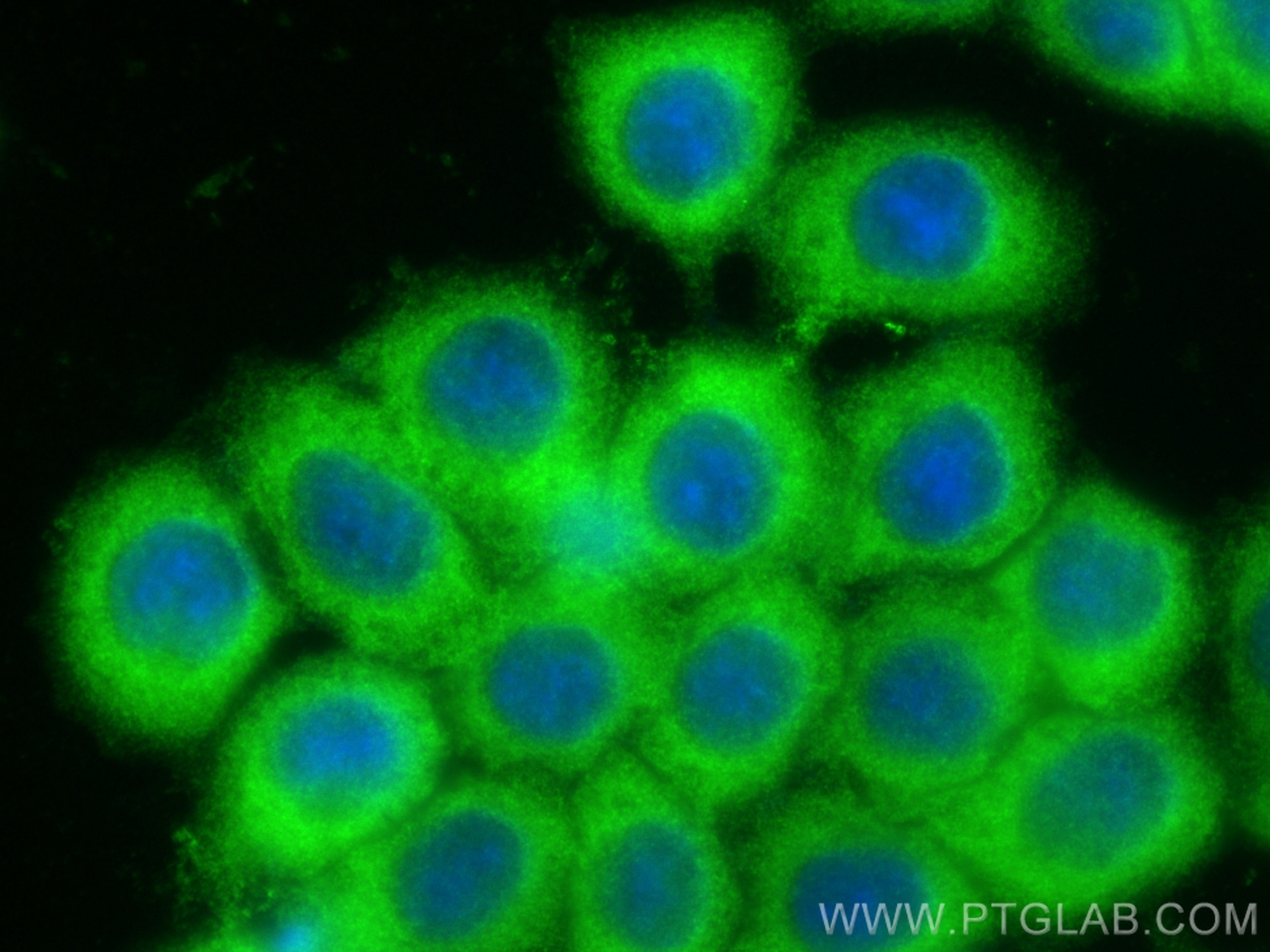- Featured Product
- KD/KO Validated
PTPN1/PTP1B Polyklonaler Antikörper
PTPN1/PTP1B Polyklonal Antikörper für WB, IHC, IF/ICC, IP, ELISA
Wirt / Isotyp
Kaninchen / IgG
Getestete Reaktivität
human, Maus, Ratte und mehr (1)
Anwendung
WB, IHC, IF/ICC, IP, CoIP, ELISA
Konjugation
Unkonjugiert
Kat-Nr. : 11334-1-AP
Synonyme
Geprüfte Anwendungen
| Erfolgreiche Detektion in WB | Sp2/0-Zellen, C6-Zellen, HeLa-Zellen, Jurkat-Zellen, Mauslebergewebe, Maus-Plazenta-Gewebe, NIH/3T3-Zellen, Rattenlebergewebe, THP-1-Zellen |
| Erfolgreiche IP | A431-Zellen |
| Erfolgreiche Detektion in IHC | Maus-Plazenta-Gewebe Hinweis: Antigendemaskierung mit TE-Puffer pH 9,0 empfohlen. (*) Wahlweise kann die Antigendemaskierung auch mit Citratpuffer pH 6,0 erfolgen. |
| Erfolgreiche Detektion in IF/ICC | BxPC-3-Zellen |
Empfohlene Verdünnung
| Anwendung | Verdünnung |
|---|---|
| Western Blot (WB) | WB : 1:2000-1:10000 |
| Immunpräzipitation (IP) | IP : 0.5-4.0 ug for 1.0-3.0 mg of total protein lysate |
| Immunhistochemie (IHC) | IHC : 1:50-1:500 |
| Immunfluoreszenz (IF)/ICC | IF/ICC : 1:50-1:500 |
| It is recommended that this reagent should be titrated in each testing system to obtain optimal results. | |
| Sample-dependent, check data in validation data gallery | |
Veröffentlichte Anwendungen
| KD/KO | See 8 publications below |
| WB | See 38 publications below |
| IHC | See 9 publications below |
| IF | See 6 publications below |
| IP | See 2 publications below |
| CoIP | See 2 publications below |
Produktinformation
11334-1-AP bindet in WB, IHC, IF/ICC, IP, CoIP, ELISA PTPN1/PTP1B und zeigt Reaktivität mit human, Maus, Ratten
| Getestete Reaktivität | human, Maus, Ratte |
| In Publikationen genannte Reaktivität | human, Affe, Maus, Ratte |
| Wirt / Isotyp | Kaninchen / IgG |
| Klonalität | Polyklonal |
| Typ | Antikörper |
| Immunogen | PTPN1/PTP1B fusion protein Ag1878 |
| Vollständiger Name | protein tyrosine phosphatase, non-receptor type 1 |
| Berechnetes Molekulargewicht | 435 aa, 50 kDa |
| Beobachtetes Molekulargewicht | 45-55 kDa |
| GenBank-Zugangsnummer | BC015660 |
| Gene symbol | PTP1B |
| Gene ID (NCBI) | 5770 |
| Konjugation | Unkonjugiert |
| Form | Liquid |
| Reinigungsmethode | Antigen-Affinitätsreinigung |
| Lagerungspuffer | PBS with 0.02% sodium azide and 50% glycerol |
| Lagerungsbedingungen | Bei -20°C lagern. Nach dem Versand ein Jahr lang stabil Aliquotieren ist bei -20oC Lagerung nicht notwendig. 20ul Größen enthalten 0,1% BSA. |
Hintergrundinformationen
PTPN1 (protein tyrosine phosphatase, non-receptor type 1) is also named as PTP1B or PTP-1B, and belongs to the protein-tyrosine phosphatase family and non-receptor class 1 subfamily. PTPN1 is involved in the regulation of several important physiological pathways, which regulates both INS and leptin signaling, and interacts with the epidermal-and platelet-derived growth factor receptors (PMID: 20101100). The gene might harbor variants influencing susceptibility to INS resistance and type 2 diabetes (PMID:15919813). The molecular mass of PTPN1 is 50 kDa, but sometimes some truncated forms can be detected as 48, 46, 39, 37 kDa due to non-specific proteolytic cleavage of PTP1B in different cells (PMID: 18253097).
Protokolle
| PRODUKTSPEZIFISCHE PROTOKOLLE | |
|---|---|
| WB protocol for PTPN1/PTP1B antibody 11334-1-AP | Protokoll herunterladen |
| IHC protocol for PTPN1/PTP1B antibody 11334-1-AP | Protokoll herunterladenl |
| IF protocol for PTPN1/PTP1B antibody 11334-1-AP | Protokoll herunterladen |
| IP protocol for PTPN1/PTP1B antibody 11334-1-AP | Protokoll herunterladen |
| STANDARD-PROTOKOLLE | |
|---|---|
| Klicken Sie hier, um unsere Standardprotokolle anzuzeigen |
Publikationen
| Species | Application | Title |
|---|---|---|
J Ginseng Res Ginsenoside compound K reduces ischemia/reperfusion-induced neuronal apoptosis by inhibiting PTP1B-mediated IRS1 tyrosine dephosphorylation | ||
Aging (Albany NY) Glycochenodeoxycholic acid induces stemness and chemoresistance via the STAT3 signaling pathway in hepatocellular carcinoma cells. | ||
J Cell Physiol Circular RNA circTET3 mediates migration of rat vascular smooth muscle cells by targeting miR-351-5p. | ||
Front Cell Dev Biol Tubeimoside I Inhibits Cell Proliferation and Induces a Partly Disrupted and Cytoprotective Autophagy Through Rapidly Hyperactivation of MEK1/2-ERK1/2 Cascade via Promoting PTP1B in Melanoma.
| ||
Eur J Pharmacol Oleanolic acid derivative alleviates cardiac fibrosis through inhibiting PTP1B activity and regulating AMPK/TGF-β/Smads pathway |
